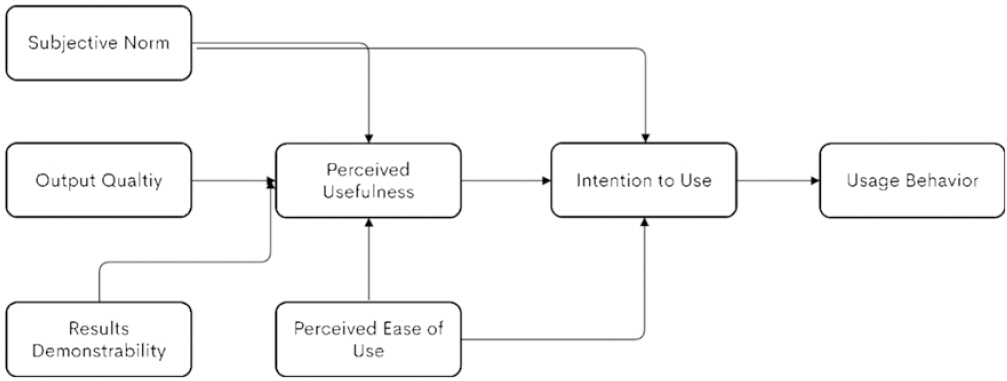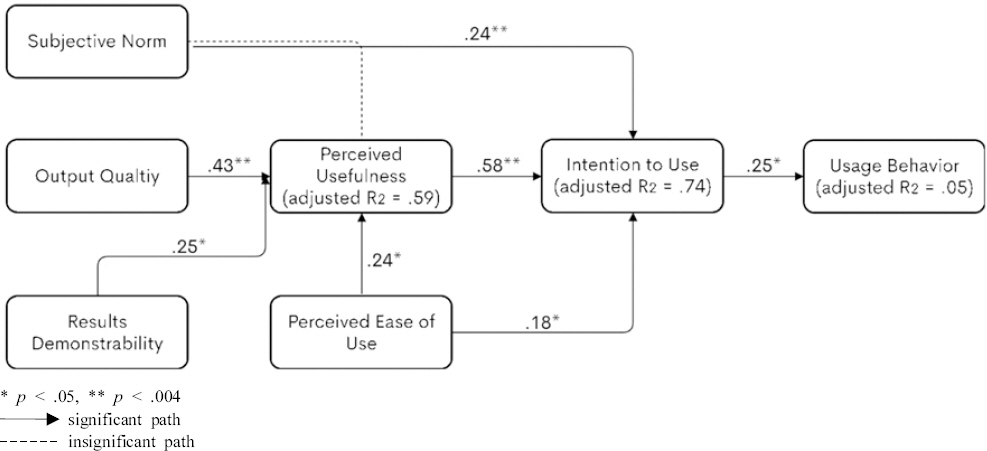Alakrash, H. M, Razak, N. A(2020). “Redesigning the English Classroom Towards Fourth Industrial Revolution, Are the Students Motivated”, The Asian ESP Journal 16(4), 6-21.
Amjad, M, Hussain, R, Siddiq, S(2020 “Pakistani ESL Learners on the Internet:Explorations into Factors Influencing their Online Language Learning Behaviour”,
Global Language Review V(III), 151-162. https://doi.org/10.31703/glr.2020(V-III).16.

Anatolyevna, V, Butt, S, Salmani, H, Zaheer, S(2018). “Do Mobile Technology in the Classroom Really Improve Learning Outcomes?”,
International Journal of Evaluation and Research in Education (IJERE) 7(3), 188-193.

Beavers, A. S, Lounsbury, J. W, Richards, J. K, Huck, S. W, Skolits, G. J, Esquivel, S. L(2013). “Practical considerations for using exploratory factor analysis in educational research”, Practical Assessment, Research &Evaluation 18(6), 1-13.
Boonmoh, A, Jumpakate, T, Karpklon, S(2021). “Teachers'Perceptions and Experience in Using Technology for the Classroom”, Computer-Assisted Language Learning Electronic Journal 22(1), 1-24.
Cai, W, Ivory, D, Smith, M, Lemonides, A. (2020, July 29). “More Than 6,600 Coronavirus Cases Have Been Linked to U.S. Colleges”,
New York Times, Retrieved from
http://www.nytimes.com
Davis, F. D(1986). “A technology acceptance model for empirically testing new end-user information systems:Theory and results”, Doctoral dissertation, Cambridge, MA:MIT Sloan School of Management.
Davis, F. D(1989). “Perceived usefulness, perceived ease of use, and user acceptance of information technology”,
MIS Quarterly 13:319-339.

Davis, F. D, Bagozzi, R. P, Warshaw, P. R(1989). “User acceptance of computer technology:A comparison of two theoretical models”,
Management Sci 35(8), 982-1003.

Davison, C, Lazaros, E(2015). “Adopting Mobile Technology in the Higher Education Classroom”,
The Journal of Technology Studies 41(1), 30-39.

Dziuban, C. D, Shirkey, E. C(1974). “When is a correlation matrix appropriate for factor analysis?Some decision rules”,
Psychological Bulletin 81(6), 358-361.

Graham, C. R(2006 “Blended learning systems:Definition, current trends and future directions”, Bonk C. J, Graham C. RThe handbook of blended learning:Global perspectives, local designs 3-21. Pfeiffer.
Griffin, J, Minter, D(2013). “The Rise of the Online Writing Classroom:Reflecting on the Material Conditions of College Composition Teaching”,
College Composition and Communication 65(1), 140-161.

Hashim, H. U, Yunus, M. M(2019). “Digital Learning with Massive Open Online Courses (Moocs):English for Communication”, Modern Journal of Language Teaching Methods 9(3), 1-5.
Jones, S, Richards, A, Cho, Y, Lee, Y. J(2019). “Pedagogical Ramifications of Fourth Industrial Revolution Technology on General English Classes from Korean Students Perspective”, Korean Journal of General Education 13(4), 501-532.
Kit, L. W, Ganapathy, M(2019). “The Reality of Malaysian ESL Teachers'ICT Pedagogical Practices:Challenges and Suggestions”,
English Linguistics Research 8(3), 39-48.

Nelson, A(2013). “Design of the Technology-Rich Classroom Practices and Facilities Environments”, Educational Technology 53(6), 3-12.
Ni, A(2013). “Comparing the Effectiveness of Classroom and Online Learning:Teaching Research Methods”,
Journal of Public Affairs Education 19(2), 199-215.

O'Connor, K(2020). “Creating, Curating and Supporting the Wall-Less Classroom”,
International Journal for e-Learning Security (IJeLS) 9(1), 604-609.

Ock, H. 2020 April 22). “S. Korea Struggles with Unprecedented Online Learning”,
Korea Herald, Retrieved from
http://www.koreaherald.com
Park, S. Y(2009). “An Analysis of the Technology Acceptance Model in Understanding University Students'Behavioral Intention to Use e-Learning”, Journal of Educational Technology &Society 12(3), 150-162.
Peterson, R. A(2000). “A meta-analysis of variance accounted for and factor loadings in exploratory factor analysis”,
Marketing Letters 11(3), 261-275.

Prajapati, B, Dunne, M, Armstrong, R(2010). “Sample size estimation and statistical power analyses”, Optometry Today 16(7), 10-18.
Raja, R, Nagasubramani, P. C(2018). “Impact of modern technology in education”,
Journal of Applied and Advanced Research 3(1), 33-35.

Shepherd, R(2018). “Digital Writing, Multimodality, and Learning Transfer:Crafting Connections between Composition and Online Composing”,
Computers and Composition 48:103-114.

Surani, D, Hamidah, H(2019). “Students Perceptions in Online Class Learning During the Covid-19 Pandemic”,
IJoASER (International Journal on Advanced Science, Education, and Religion) 3(3), 83-95.

Tavakol, M, Dennick, R(2011). “Making sense of Cronbach's alpha”,
International Journal of Medical Education 2:53-55.



Townsend, J, Nail, A, Cheveallier, J, Browning, A(2013). “An Online Writing Partnership:Transforming Classroom Writing Instruction”,
The English Journal 102(4), 74-81.

Venkatesh, V, Davis, F. D(2000). “A theoretical extension of the technology acceptance model:Four longitudinal field studies”,
Management Science 46(2), 186-204.

Wen, K. Y. K, Kim Hua, T(2020). “ESL Teachers'Intention in Adopting Online Educational Technologies during COVID-19 Pandemic”,
Journal of Education and E-Learning Research 7(4), 387-394.











